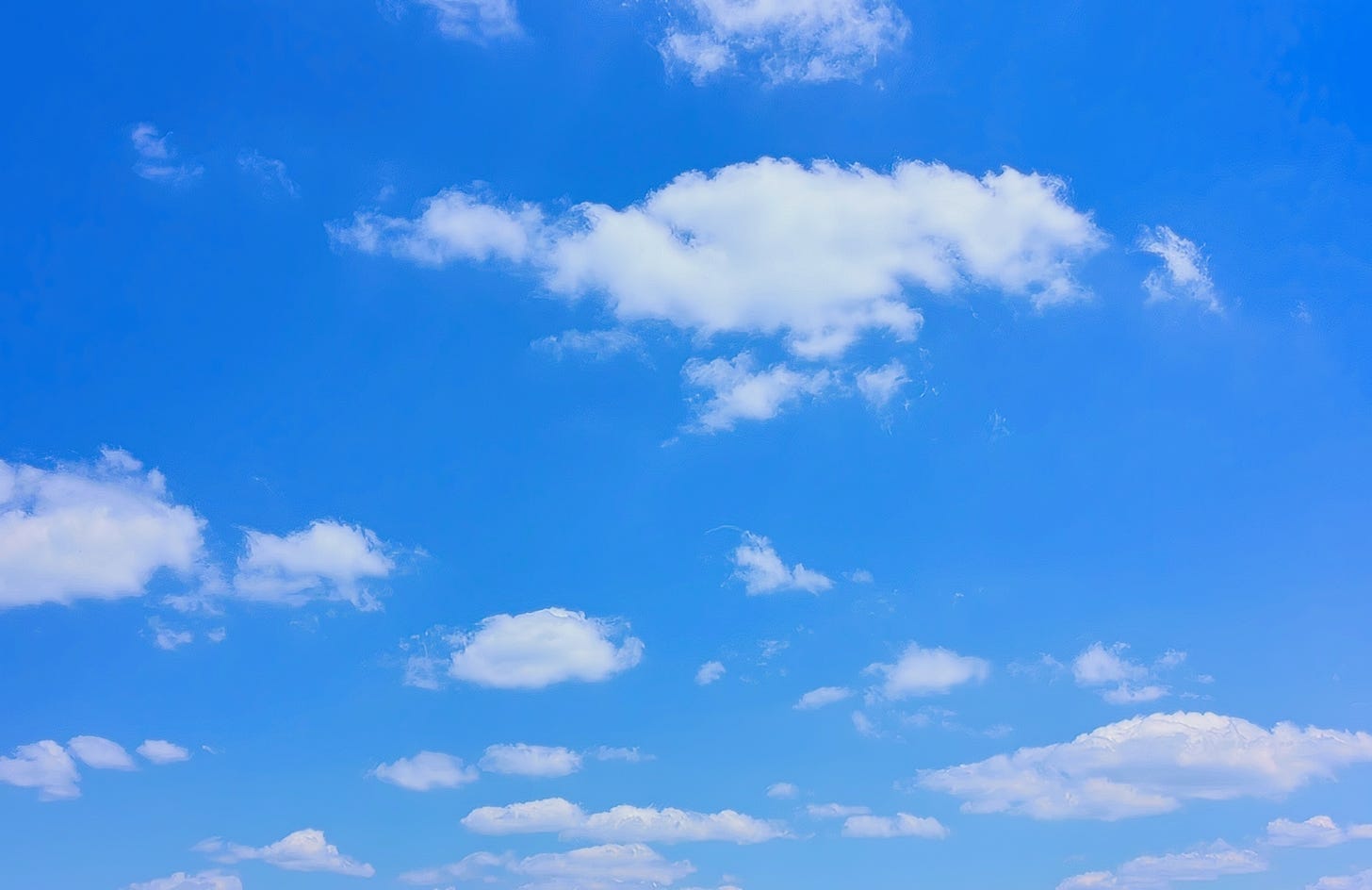The method for taking all situations as the path is to rest within the essence of the mind. Within our minds, there are three aspects: the way things appear, how they are confused, and the way they actually are. We do not take our difficulties on the path in relation to how things appear or are confused, but in relation to how they actually are. We rest naturally within their nature—the clear and empty nature of the mind that is sometimes called the union of clarity and emptiness or the union of wisdom and the expanse. We rest within this, recognizing it.
—Thrangu Rinpoche
With thanks again to one of my dear sangha sisters for the quotation, today’s podcast and post is about “the clear and empty nature of the mind,” which you may hear referred to as rigpa or simply as nature of mind. Resting in the nature of mind is the heart of my Buddhist practice. As long as I can find that state and remain in it, I can handle any situation along the path—usually in a joyful way but always with kindness and compassion for myself and others.
I kid you not. I believe that peace of mind is available to every one of us.
Learning to find and rest in your nature of mind can’t be done in words and images. It’s an experiential process that takes time and…not effort but whatever you can imagine as the opposite of effort. It takes a relaxing into your mind—not the confused aspects of your mind—its true nature that “is sometimes called the union of clarity and emptiness or the union of wisdom and the expanse.”
While words won’t take you to the nature of your mind, I’m going to use some to, I hope, enhance your motivation to find it. For most of us, finding it requires a trained and credentialed teacher. For me, that’s one with teaching transmission in a Vajrayana Buddhist lineage. But one size doesn’t fit all. Mingyur Rinpoche is now my primary teacher. His 2017 article in Lion’s Roar magazine has a section on finding a genuine teacher. Whatever your tradition, you might check out that article.
Even after three decades of practicing Buddhism, it took me eight or nine years of working with two Vajrayana Buddhist teachers to help me the rest of the way to an experiential understanding of the nature of mind. So please look for a qualified teacher if you don’t already have one. Here’s a way to think about that pure nature of mind you can learn how to rest in:
Imagine lying on your back on a flat expanse of land and looking up at a sky like this one. The sky is a metaphor for your mind with its pure and empty nature and innocence untouched by a troubled world.
Your senses tell you the sky is blue, but that’s so only because of the way air molecules scatter the light of the sun. The sky has no color at all.
Your senses tell you it forms a dome above you, but you know it encircles the earth.
Your senses tell you it’s flat, but you know it’s limitless.
Imagine that the endless, uncolored sky is your mind or, instead, that aspect of your mind that is unconfused and sees the world exactly as it is.
Imagine that the clouds are thoughts, emotions, perceptions, and confusions. On some days, there are more of them. On some days, there are storms. But the sky—your innate, pure mind—is unphased. It sees the clouds and storms for what they are. Nothing changes its nature or the wisdom and compassion that come along with it.
The further I get into Buddhist practice, the more I come back to the original teachings of the Buddha. Here are five simple words from the Dhammapada (verse 36):
The watched mind brings happiness.
Please pause and reflect on that before you return to your day and maybe as you continue through your day.
Note to Substack subscribers: We seem to be going through a growth spurt. Thank you for helping in my effort to reduce the world’s suffering. Because of the paid subscribers, on an annualized basis, I’m halfway to recovering the ongoing expenses of maintaining this blog and podcast.
If you’re a free subscriber, you may get an offer from Substack to pay for the first month of your membership if you upgrade your subscription to a paid one. Even though the content you receive is the same either way, consider upgrading for the benefit of feeling good about it.😀
From the Pure Land has hundreds of subscribers in 29 U.S. states and 12 countries. The podcast has listeners in 30 countries. Consider:
If you are not already a subscriber, please become one. Free and paid subscribers receive the same content, but subscribing for $5 a month or $50 a year helps support my mission.
Make a one-time gift of any amount.
Share this post with a friend.
Listen and subscribe to the From the Pure Land podcasts via your favorite app or by clicking here.













Share this post